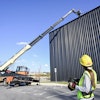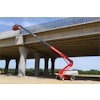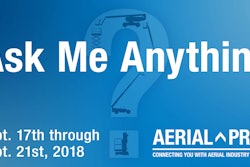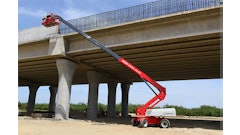Training is an essential tool for employers to meet their duty to provide a workplace safe from harm. Government regulations and industry standards require that employees receive training so that work will be performed in a safe and healthful manner.
Training is defined in new industry standards as the instruction to enable the trainee to become a qualified person regarding the task to be performed, including knowledge regarding potential hazards. Training is the foundation of learning and combined with experience create the knowledge and skills to be qualified to perform specific task.
Training and instruction mean imparting information, a definition that implies the information is presented in a manner the recipient is capable of understanding. In 2007, OSHA issued an OSHA Training Standards Policy Statement stating “employee training required by OSHA standards must be presented in a manner that employees can understand."
The following is an excerpt from the OSHA policy: “In practical terms, this means that an employer must instruct its employees using both a language and vocabulary that the employees can understand. For example, if an employee does not speak or comprehend English, instruction must be provided in a language the employee can understand. Similarly, if the employee's vocabulary is limited, the training must account for that limitation. By the same token, if employees are not literate, telling them to read training materials will not satisfy the employer's training obligation. As a general matter, employers are expected to realize that if they customarily need to communicate work instructions or other workplace information to employees at a certain vocabulary level or in a language other than English, they will also need to provide safety and health training to employees in the same manner.”
In the US, a growing Spanish-speaking population has raised awareness of the need to provide training in Spanish. Similarly, training in the Quebec province of Canada benefit from training in French. While these are well-known issues in the region, each worker must receive training that they can understand. Language, literacy, comprehension issues must be identified and addressed prior to training.
OSHA policy states “if a reasonable person would conclude that the employer had not conveyed the training to its employees in a manner they were capable of understanding, then the violation may be cited."
This training requirement is now part of the Canadian B354.8 and US A92.24 Mobile Elevating Work Platform (MEWP) training standards. B354.8 requires users “to identify and provide training in a language that the trainee understands” and A92.24 requires users to “ensure that training is presented in a manner that trainees can understand." The OSHA policy statement offers guidance on how to apply “training in a manner employee can understand."
“As a general matter, employers are expected to realize that if they customarily need to communicate work instructions or other workplace information to employees at a certain vocabulary level or in a language other than English, they will also need to provide safety and health training to employees in the same manner.”
MEWP operator training is a requirement. Theory training is available from both instructor led and online courses. It is likely that online courses will be easier to offer in many languages, but instructor led training is available in multiple languages. Furthermore, employers can offer instruction in learning the English language to non-English speaking employees.
![Tony Groat Edited 5b57430ec070e[1] Headshot](https://img.forconstructionpros.com/files/base/acbm/fcp/image/2024/06/Tony_Groat_edited.5b57430ec070e_1_.667c30792412c.png?auto=format%2Ccompress&crop=faces&fit=crop&h=48&q=70&w=48)
















![Building Angled Sm Edit 6050b8d213f1b[1]](https://img.forconstructionpros.com/mindful/acbm/workspaces/default/uploads/2025/09/building-angled-sm-edit6050b8d213f1b1.Ygq5aAos3b.png?ar=16%3A9&auto=format%2Ccompress&crop=focalpoint&fit=crop&fp-x=0.53&fp-y=0.23&fp-z=2&h=135&q=70&w=240)


